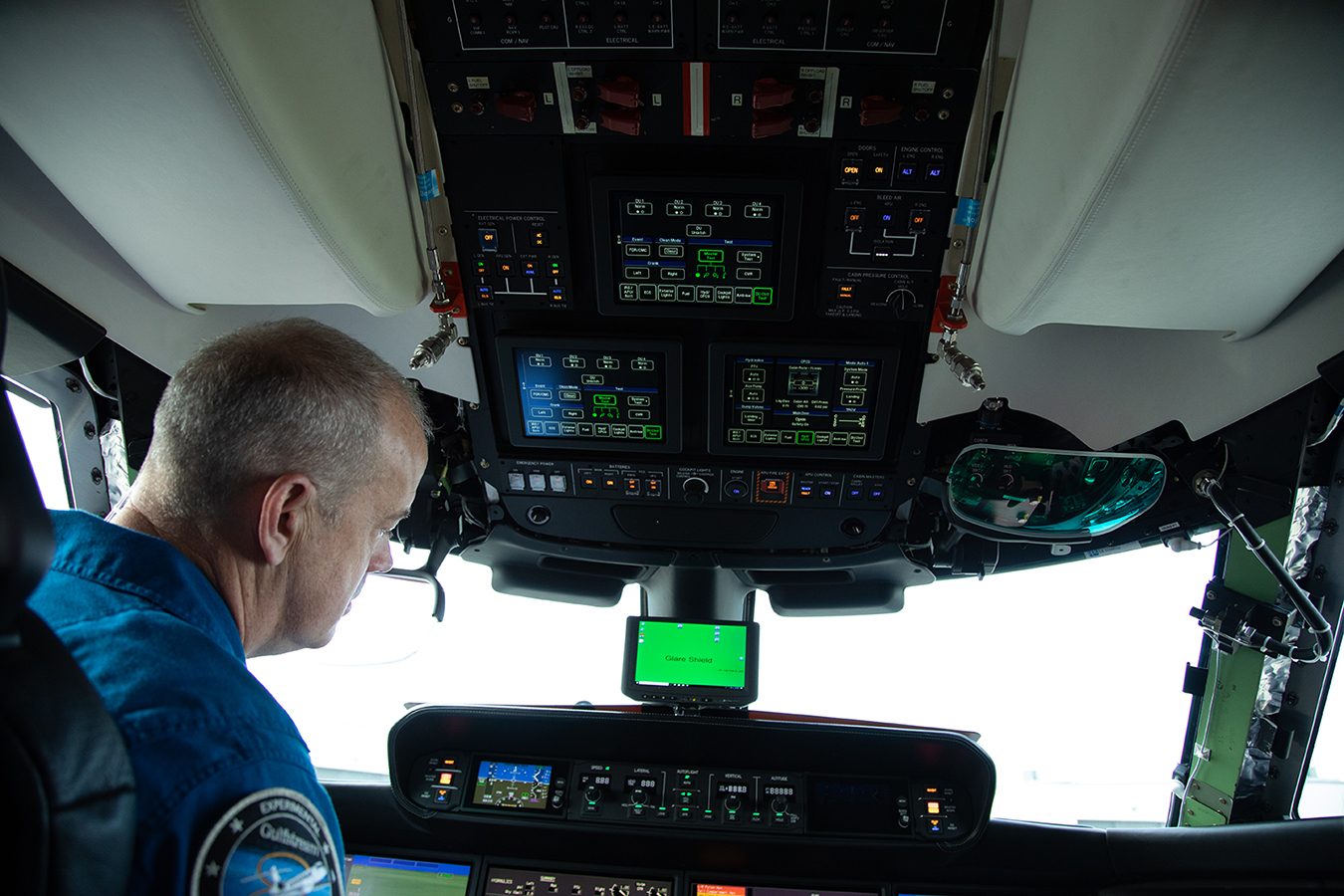Stay Up to Date
Submit your email address to receive the latest industry and Aerospace America news.
The Digital Avionics Technical Committee advances the development and application of communications, navigation and surveillance systems used by military and commercial aircraft.
Early in the year, Honeywell performed a series of tests in Phoenix to demonstrate the detect-and-avoid capability of its IntuVue RDR-84K Band Radar System. The small and lightweight radar uses electronic beam steering to detect targets up to 3 kilometers away. For the demonstrations, pilots flew two quadcopter drones — only one of which was equipped with the RDR-84K — on a collision course 300 feet above the ground. In each case, the drone equipped with the radar autonomously navigated around the other (noncooperating) drone, thus avoiding a collision. This innovative technology will be a key enabler of beyond-visual-line-of-sight operations for drones and advanced air mobility aircraft.
One of the applications for drones is parcel delivery. In April, Wing, a subsidiary of Google’s parent company Alphabet, began the first commercial drone delivery service in a U.S. metro area, with deliveries of select grocery items and ice cream to consumers in Texas. Digital electronics on a Wing drone allow it to perform several tasks autonomously, such as planning a flight; navigating to a delivery location; hovering in place as it lowers a parcel to the ground; and dealing with contingencies. To ensure safety, each Wing drone has several redundant components, including multiple hover motors, batteries and navigation sensors. Wing is developing software to allow drones and crewed aircraft to operate within the same airspace.
As part of its flight test campaign in Spain, Germany-based Lilium’s unoccupied Phoenix 2 demonstrator transitioned from hover to wingborne flight in May. At the end of this transition, lift is generated by the aircraft’s wings rather than by the engines. According to the advanced air mobility company, this marked the first time that a full-sized electric jet completed such a transition. This achievement was made possible in part by the onboard avionics, particularly the flight control system. For its seven-seater Lilium Jet — targeted to begin passenger flights in 2025 — Lilium has selected Honeywell’s Anthem flight deck and fly-by-wire flight control system. Honeywell says that the Anthem flight deck is the first cockpit system to offer always-on cloud connectivity. One of the benefits of this system is that it allows the wireless exchange of data between an aircraft and pilots or maintenance engineers. U.K.-based Vertical Aerospace, another electric vertical takeoff and landing company, has also opted for Honeywell’s avionics and flight control system for its VX4 aircraft.
In June, Gulfstream completed the first flight of a G800 test aircraft. The aircraft features Gulfstream’s Symmetry flight deck, which includes BAE’s active control side sticks, GE Aviation’s Data Concentration Network, Korry’s overhead panel touchscreens, and L3’s touchscreen standby displays. Symmetry also includes the Honeywell Primus Epic system, including Honeywell’s next-generation flight management system, 2D and 3D airport moving maps, touchscreen controllers, activated checklists and a new combined vision system that merges a camera image and a synthetic image with dual head-up display. This allows both pilots to operate head-up in low-visibility situations and at any time of the day.
Combined vision systems will also soon be available on the Boeing 737NG. In July, Israel-based Elbit Systems’ Universal Avionics subsidiary was awarded a $33 million contract from Florida-based AerSale Corp. to provide the ClearVision Enhanced Flight Vision Systems for the Boeing 737NG. ClearVision is a certified combined vision system that combines a 360-degree field of view head-mounted display and an EVS-5000 multispectral camera system. This product provides a new option for Boeing Business Jet operators, which previously had a single, lefthand head-up display as the only option.
Stay Up to Date
Submit your email address to receive the latest industry and Aerospace America news.




